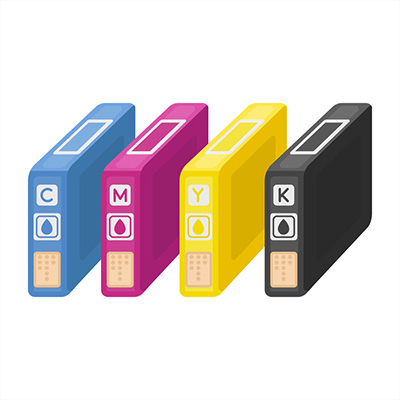
By-in-large, most of today’s businesses are doing more to move away from their reliance on printed material. That’s not to say that nearly every business still requires the use of at least one printer. Most people believe that when your “ink” is low in your printer, the quality of the print job will suffer. This is true for inkjet printers, but for those that have laser printers, the “ink” isn’t really ink at all, it’s a thing called toner. For this week’s technology basics article, we will define what print toner is and how it differs from ink.
Ink vs. Toner
The first thing we’ll need to do is differentiate between ink and toner. Ink has been used in printing since the beginning. It is made from mixing pigment with a liquid base such as water or alcohol. It is normally made from synthetic material nowadays, but for centuries it was made from a vast variety of plants and minerals, and even from some creatures that produce an ink-like substance naturally. By the time the printing press was developed in 1440, oil-based ink was being used to facilitate one of the greatest shifts in human civilization.
Toner, on the other hand, is a powdery substance (typically fine plastic particles) that is used in laser printers. Previously it was made with carbon powder and iron oxide, which was mixed and melted with a polymer. Toner works by being melted onto the page. This bonding process is the key to sharp, fast reproduction. Toner is found inside a laser printer cartridge and is available in sets of cyan, magenta, yellow, and black, providing an impressive color representation whilst printing.
Cost
For the average user, cost is typically calculated on a per-page basis, so some of the upfront costs aren’t always taken into account. For example, laser printers tend to be more expensive than their ink-fueled counterparts, but also produce faster, more sustainably good reproductions of images and text. That speed and quality could work to mitigate any price discrepancy that exists between the two products.
Let’s look at a full list of pros and cons of toner-based printing:
Pros:
– Toner-based printers tend to last longer: When comparing the two, a laser printer will be able to put out more pages and last a little longer than an ink-based printer.
– Toner-based printers tend to produce better prints: The laser printer’s precise nature provides clear, better defined images. While there are ink-based printers that do a fantastic job, over time, the laser printer will produce superior prints for longer.
– Toner-based printers are much faster: This is possibly the biggest benefit. Laser printing is simply faster than ink-based printing. For companies that need to print more, quickly, a laser printer will prove to be a superior product.
Cons:
– Toner-based printers (and refills) are more expensive: As you would imagine, superior technology will fetch higher prices at market. You’ll also pay more for replacement print toner cartridges even though you’ll likely get more long term value out of them.
– Toner is messy if you try to refill your own cartridges: Refilling ink-based cartridges is no picnic either, but if you are looking to save a few dollars by getting the most out of your drum-connected cartridges, know that refilling a laser printer toner cartridge is difficult and you may not get the print quality you would with a new cartridge.
If your printers are an important part of your business’ computing infrastructure, knowing how to get the best quality prints for the best price can save you a lot of money. The team at Midnight Blue partner with some of the very best vendors in the industry, and we can manage your organization’s vendor relationships to help you see the biggest ROI on your printing investments. For more information about how we can help you reduce your printing costs and increase your productivity, call us today at 412.342.3800 or click
here.

